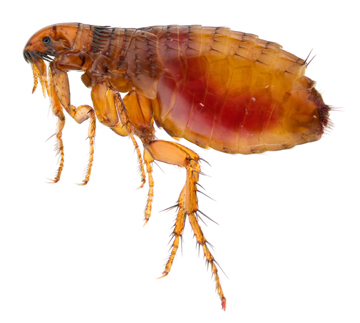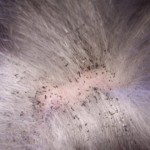Tails
Making pet parenting easy

Fleas in dogs
This entry was posted on 2014-07-01.
The most common skin disease in pets is flea bite hypersensitivity and allergic dermatitis. The saliva from the fleas induces an allergic response in the skin of the dog, which commonly develop in young dogs but may begin at any age.
Symptoms and Types
Flea bite hypersensitivity results in frequent and severe itching (pruritus) which can occur when as little as one or two flea bites have been sustained. This means that symptoms will often persist even after some form of flea control has been used. The scratching often results in hair loss and scabs on the dog’s skin. Fleas or flea dirt may be visible on your dog’s body.
Causes
The adult flea is about 2.5mm in size, dark brown and can be seen with the naked eye. Fleas are unable to fly but they have powerful back legs, enabling them to jump great distances. They move rapidly through the hair, making it difficult to catch them.
Treatment
There are numerous options on the market for treatment and control of fleas (insecticides). It is important that they are repeated, as indicated, for continuous flea control. Topical treatments are usually applied to a small area, most commonly at the top back of the neck where the dog is unable to lick it off.
Other treatments may involve steroids or antihistamines to treat the sensitivity to the bites or antibiotics if a bacterial infection has resulted from open sores.
Prevention
For continual flea control, the insecticides should be applied on a regular basis as indicated on the product instructions. Seek the guidance of your veterinarian if you are unsure. Other factors to consider are regular bathing of your dog and inspection for fleas.
Living and Management
As mentioned previously, the most important factor in managing a dog with fleas is the application of regular doses of flea treatment on a timely basis. It only takes one or two bites for a flea allergic animal to start itching and therefore consistency with flea control products is imperative.



